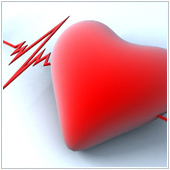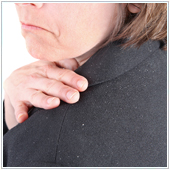 Can you imagine a life without sight? Many of us cannot. Eye health is something we tend to take for granted. That’s why March is designated as National Save Your Vision Month by the American Optometric Association. It’s a campaign designed to raise awareness about the importance for Americans to have regular eye exams. It also includes some tips on how to maintain your precious eye health.
Can you imagine a life without sight? Many of us cannot. Eye health is something we tend to take for granted. That’s why March is designated as National Save Your Vision Month by the American Optometric Association. It’s a campaign designed to raise awareness about the importance for Americans to have regular eye exams. It also includes some tips on how to maintain your precious eye health.
Whether your vision fades because of age or injury, you shouldn’t wait to think about how valuable it is to you. According to the American Optometric Association, eyestrain and other health problems that impact vision are becoming increasingly common and can occur in 9 out of 10 people who use computers at work. That’s why we’ve put together this list of 3 steps to start protecting your vision now.
#1: Get an annual eye exam.
Regardless of your age, an annual eye exam is a vital part of maintaining your physical health. In fact, eye doctors are often the first to detect chronic systemic diseases such as diabetes and high blood pressure. Regular eye exams can ensure normal vision development and academic achievement for children, as well as prevent and detect eye disease in adults.
#2: Take precautions in the work place.
If you work outdoors, wear proper gear to protect your eyes from debris and sun. If you work in front of a computer, take frequent breaks from looking at a computer screen, adjust the monitor contrast and brightness to a comfortable level and position your monitor about 16-30 inches from your eyes.
#3: Know the common symptoms of vision impairment.
Be aware of the most common symptoms that accompany vision issues and be sure to contact a healthcare professional if you experience them. The most common symptoms include:
-
blurred or double vision
-
excessively watery eyes
-
excessive blinking and squinting
-
headaches, neck pain, shoulder pain
No matter how great you think your vision may be, there’s no time like the present to get a check-up. Take advantage of the annual reminder during National Save Your Vision Month to get your eyes checked. The staff at [company_short] is always here to answer your questions and assist you in finding the perfect eye-health products from our in-store selection. We look forward to seeing you soon.
 We’re all accustomed to a certain level of pain on a regular basis – soreness from an old injury, a belly ache from overeating or a headache from skipping your usual coffee. Most of the time, the pain you experience is minor and you have an idea of what’s causing it. But other times, the pain seems worse than usual or sticks around longer than it should.
We’re all accustomed to a certain level of pain on a regular basis – soreness from an old injury, a belly ache from overeating or a headache from skipping your usual coffee. Most of the time, the pain you experience is minor and you have an idea of what’s causing it. But other times, the pain seems worse than usual or sticks around longer than it should. If you’re looking for a healthy new food staple to compliment your current diet, there are plenty of popular super foods to consider. But if you’re interested in increasing your intake of fiber, calcium, antioxidants and protein while curbing your appetite, look no further than the chia seed.
If you’re looking for a healthy new food staple to compliment your current diet, there are plenty of popular super foods to consider. But if you’re interested in increasing your intake of fiber, calcium, antioxidants and protein while curbing your appetite, look no further than the chia seed. We are just weeks into a new year, but January 1 already seems like a vague memory. Chances are, you set goals for 2014, but you’re already struggling to carry them out. New Year’s resolutions related to your physical and emotional health are very popular year after year, but they can also be the hardest resolutions to keep.
We are just weeks into a new year, but January 1 already seems like a vague memory. Chances are, you set goals for 2014, but you’re already struggling to carry them out. New Year’s resolutions related to your physical and emotional health are very popular year after year, but they can also be the hardest resolutions to keep. Did you know that the leading cause of death among both women and men is heart disease? That’s right – about 715,000 Americans have heart attacks each year and in the United States alone,
Did you know that the leading cause of death among both women and men is heart disease? That’s right – about 715,000 Americans have heart attacks each year and in the United States alone,  The chronic scalp condition characterized by itching and flaking is known as
The chronic scalp condition characterized by itching and flaking is known as 


